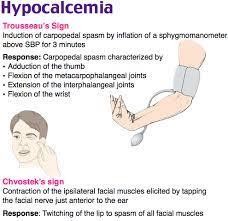A nurse notes that a client's serum potassium level is 5.9 mEq/L. The nurse interprets this as an expected finding in the client with:
Diabetic ketoacidosis
Heart failure being treated with furosemide
Addison disease
Cushing disease
The Correct Answer is C
Choice A rationale: Typically associated with potassium depletion rather than elevated levels.
Choice B rationale: Furosemide, a loop diuretic, can cause potassium depletion leading to hypokalemia, but it might also cause transient elevations in potassium levels initially. Choice C rationale: Addison disease can cause hyperkalemia, or high potassium, due to decreased renal excretion of potassium and increased retention of sodium and water.
Choice D rationale: Cushing disease can cause hypokalemia, or low potassium, due to increased renal excretion of potassium and decreased reabsorption of sodium and water.
Nursing Test Bank
Naxlex Comprehensive Predictor Exams
Related Questions
Correct Answer is C
Explanation
Choice A rationale: Chvostek and Trousseau signs are not typically associated with hypothyroidism.
Choice B rationale: These signs are not commonly related to pineal tumors.
Choice C rationale: Chvostek and Trousseau signs, indicating neuromuscular irritability due to hypocalcemia, are often seen in hypoparathyroidism.
Choice D rationale: Chvostek and Trousseau signs are not characteristic findings in pheochromocytoma.

Correct Answer is A
Explanation
Choice A rationale: An allergy to sulfa drugs is important as some diabetes medications, like sulfonylureas, contain components related to sulfa drugs, which could cause an allergic reaction in susceptible individuals.
Choice B rationale: Smoking cessation and lifestyle history are important but might not directly impact initial diabetes treatment options.
Choice C rationale: Numbness in the soles of the feet might indicate neuropathy, a common complication of diabetes, but is not directly related to the choice of initial treatment.
Choice D rationale: While obesity is a risk factor for Type 2 diabetes, it's less critical for immediate treatment decisions compared to drug allergies that could impact medication choices.
Whether you are a student looking to ace your exams or a practicing nurse seeking to enhance your expertise , our nursing education contents will empower you with the confidence and competence to make a difference in the lives of patients and become a respected leader in the healthcare field.
Visit Naxlex, invest in your future and unlock endless possibilities with our unparalleled nursing education contents today
Report Wrong Answer on the Current Question
Do you disagree with the answer? If yes, what is your expected answer? Explain.
Kindly be descriptive with the issue you are facing.
